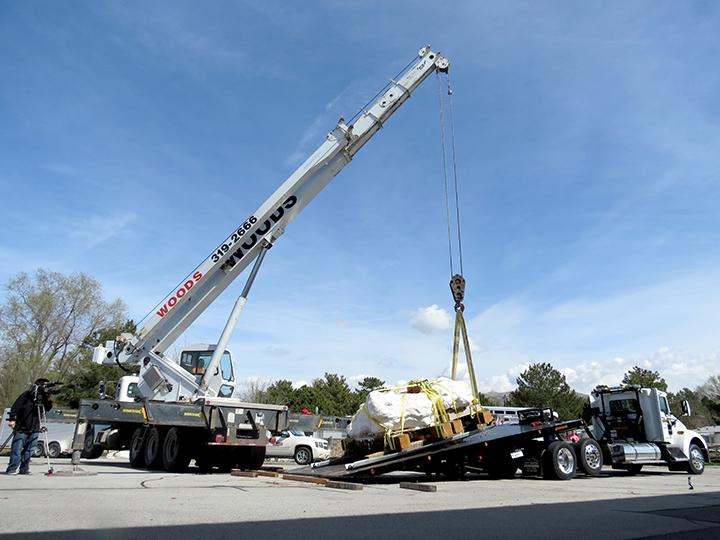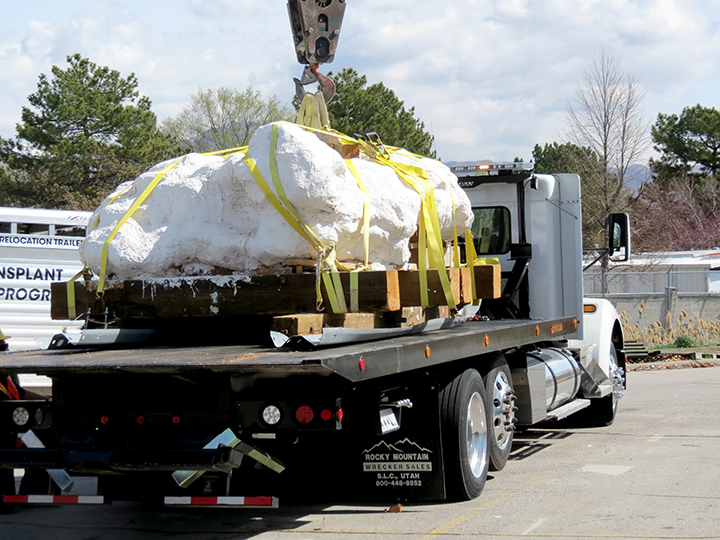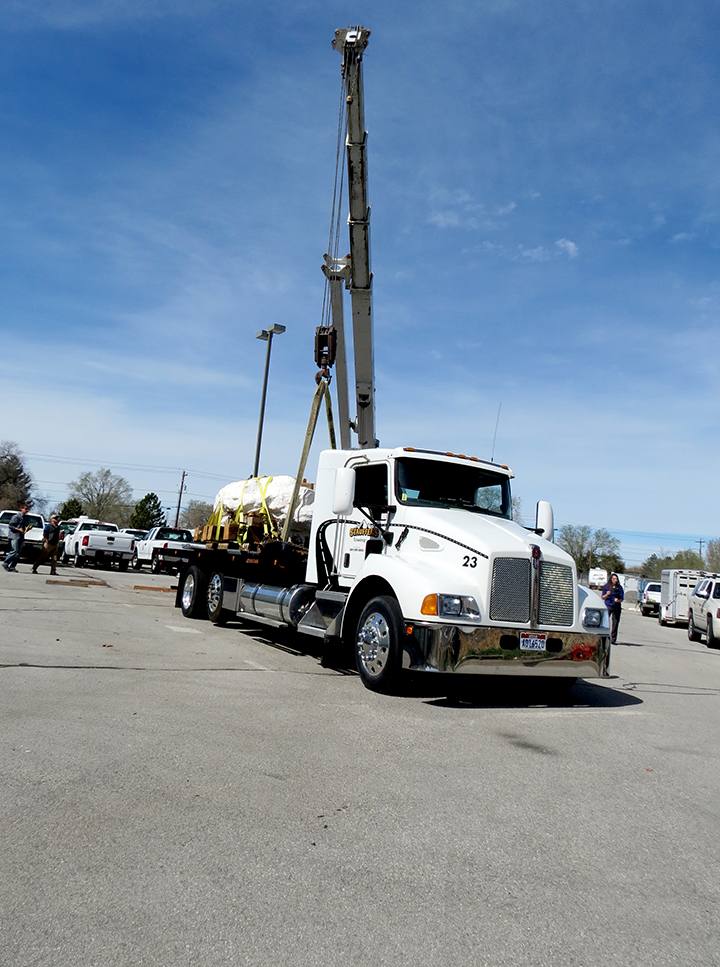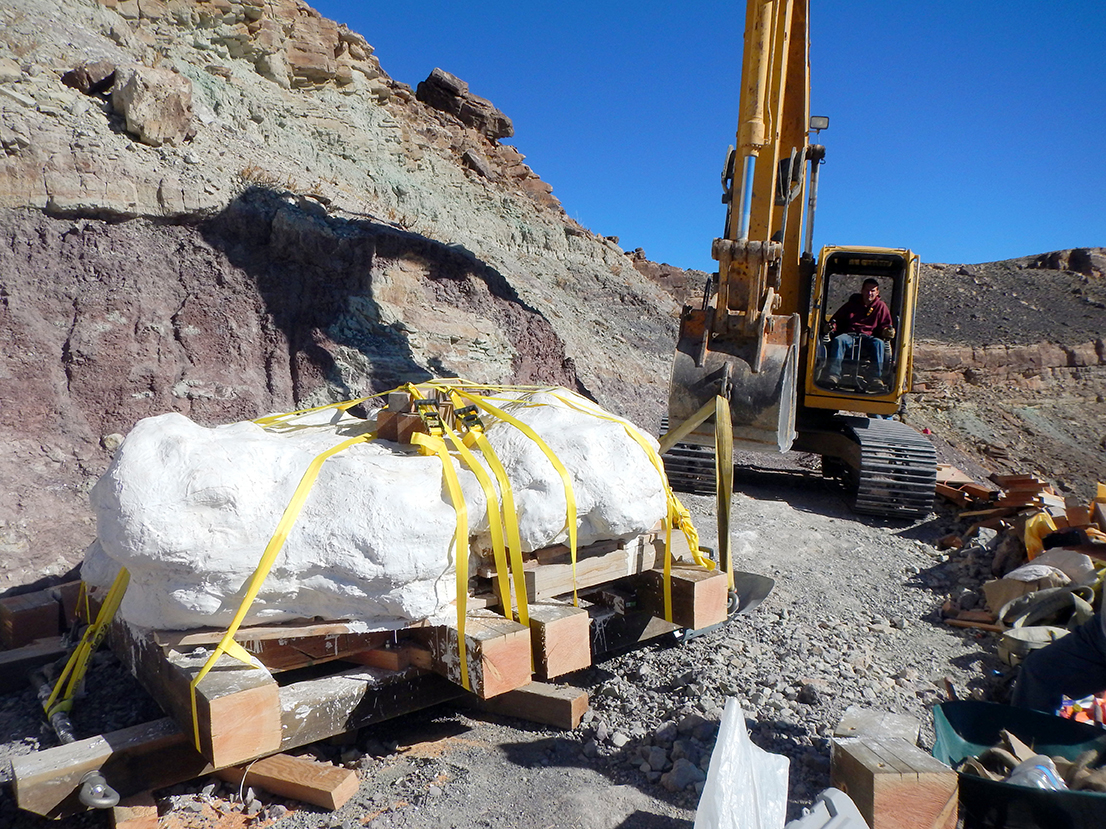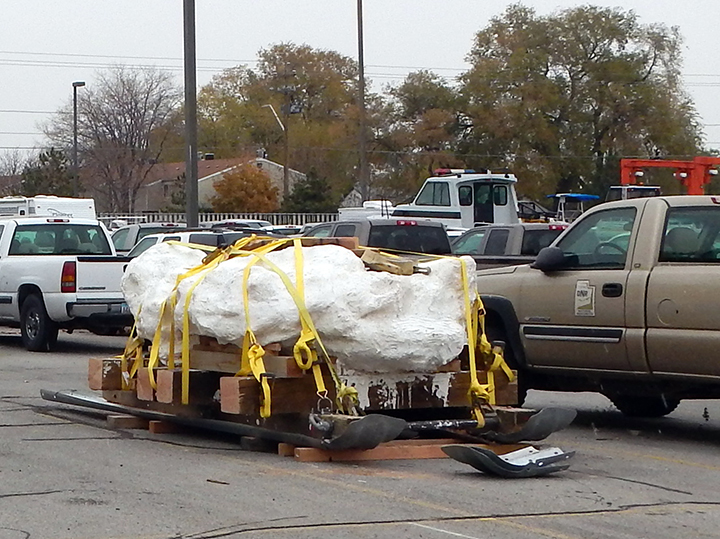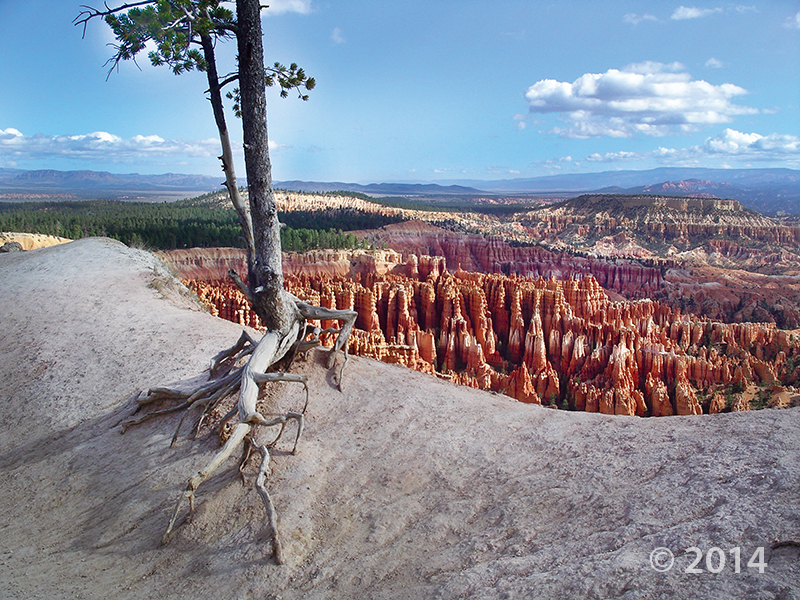The shallow waters of Bridger Bay, on the northwestern tip of Antelope Island in the southern arm of hypersaline Great Salt Lake, support extensive microbial carbonate formation, especially in the north-northeast portion of the bay near Egg Island. Lake levels in the fall of 2014 were near 60-year lows (as low as 1278.1 m [4193.3 ft] AMSL, compared to the near-term historic average of about 1280 m [4200 ft]), giving unprecedented access to the microbial structures. Characterizing the microbialites of Bridger Bay, including facies delineation and aerial extent, can inform interpretations of similar deposits in the ancient rock record (e.g., Eocene Green River Formation), including potential petroleum reservoirs.
Music:
Headphone Activist – The Rainforest.
soundcloud.com/headphoneactivist
www.facebook.com/HPABeats
phys.org
kutv.com
A 125-million-year-old fossil was delivered to Thanksgiving Point’s Museum of Ancient Life in Lehi, nearly 15 years after a graduate student discovered the dinosaur site.
upr.org
The Great Salt Lake is, right now, actually two lakes split in half by a long railroad causeway. A couple years ago the crumbling culverts that allowed flow between the north and south arms of the lake were closed for safety. Since then, scientists say, curious things are happening to the lake, especially as it approaches historic low levels.
March 17, 2015
Salt Lake City – March 17, 2015 – The Utah Geological Survey (UGS) has signed an agreement with Thanksgiving Point Institute to extract and prepare the fossils of a pack of Utahraptors encased in a nine-ton sandstone block.
Utahraptors are the oldest known dromaeosaurids, or bird-like therapod dinosaurs. They resemble Steven Spielberg’s Velociraptor from the movie Jurassic Park, but are much larger and believed to be a more ferocious predator.
On Wednesday, March 18th, Cross Marine Projects of American Fork will generously donate their services to relocate the sandstone block from the Utah Department of Natural Resources (DNR) in Salt Lake City to Thanksgiving Point’s Museum of Ancient Life in Lehi. Upon securing the necessary funding, one of the world’s top micropreparators, UGS geologist Scott Madsen, and his colleagues may spend up to five years preparing the fossils in the museum’s paleo lab, begining as early as May.
The museum’s paleo lab has a public observation room and will be equipped with video microscopes to feed video footage into the museum. This public access will give museum visitors an educational opportunity to see firsthand the extensive detail and care paleontologists use to prepare fossils.
“This will allow museum guests to see real science happening in real time,” stated Rick Hunter, Thanksgiving Point paleontologist. “We fully expect to learn much more about raptor behavior and the growth stages from juvenile to adult in Utahraptor. This is going to be huge for paleontology.”
“Thanksgiving Point has the only paleo lab in the region suitable to work on such a large block,” said James Kirkland, UGS State Paleontologist. “This discovery has the best preserved and most complete Utahraptor skeletons ever found. Normally we’d break a large discovery like this into smaller blocks. But this one is so rich with intertwined skeletal remains that we couldn’t split it without hitting skeleton.”
Preliminary analysis of the 125 million year old sandstone indicates the block contains the remains of at least six, and possibly many more, Utahraptors, including one adult, four juveniles, and one baby. Preservation within the block appears exceptional, lending to the hope that details such as feather impressions may be preserved. Bones of at least two iguanodont dinosaurs were also discovered within the sandstone block, leading Utah paleontologists to believe the Utahraptors were hunting when they became mired in quicksand, buried, preserved, and fossilized.
UGS paleontologists originally extracted the mega-block from the Stikes Quarry, which is located on Utah State land in east-central Utah, north of Arches National Park. Matt Stikes, a former graduate student at Northern Arizona University, discovered the site and reported it to the UGS in 2004. Last year Cross Marine Projects donated their services to recover the nine-ton block from its steep hillside location and move it to DNR. All fossils within the block are owned by the State of Utah and after preparation, their final repository will be with the Natural History Museum of Utah.
Media Contact
Mark Milligan
Utah Geological Survey
801-537-3326 (office)
markmilligan@utah.gov
Happy St. Patrick’s day, geo friends! Even the red rocks of Bryce Canyon can boast a little green.
Bryce Canyon National Park, Garfield County, Utah
Photographer: Bob Biek; © 2014
Bryce Canyon National Park owes its existence to high rates of erosion by the Paria River and its tributaries, in combination with the alternating resistant and soft, jointed and fractured layers of the Tertiary-age Claron Formation. The park is adorned with a fantastic variety of hoodoos and sculpted fins eroded into the rapidly retreating Paunsaugunt Plateau escarpment.
The “turtle” hoodoo in Bryce Canyon National Park appears to have lost its head. Tucked away for eternity, read more about the eroded redrock icon in this article.
sltrib.com
It looks like Bryce Canyon’s “turtle” has lost its head.
By: Daren T. Nelson and Paul W. Jewell
The Hogup Bar quadrangle is located southeast of Park Valley, Utah, and west of the northwest arm of Great Salt Lake. Late Pleistocene Lake Bonneville sediments and related shorelines dominate the landscape, and record the transgression and regression of Lake Bonneville. Surficial deposits overlie Tertiary basalt and Permian-Pennsylvanian sedimentary bedrock.







